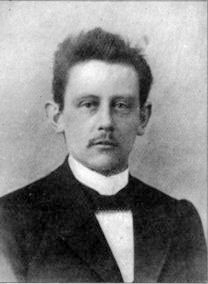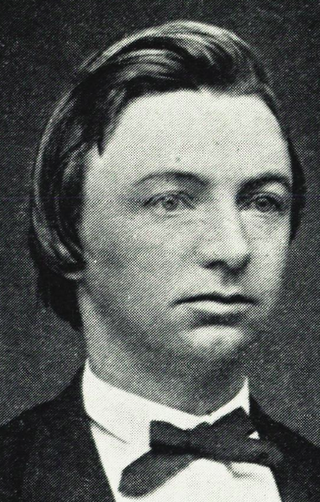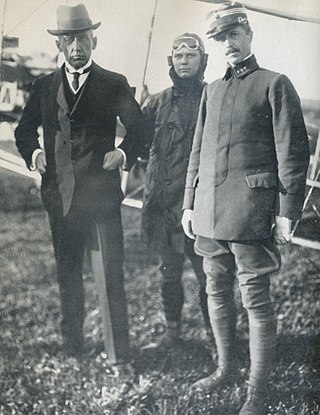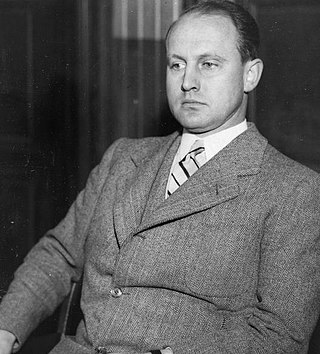
The Norwegian Academy of Science and Letters (Norwegian : Det Norske Videnskaps-Akademi, DNVA) is a learned society based in Oslo, Norway. Its purpose is to support the advancement of science and scholarship in Norway.

The Norwegian Academy of Science and Letters (Norwegian : Det Norske Videnskaps-Akademi, DNVA) is a learned society based in Oslo, Norway. Its purpose is to support the advancement of science and scholarship in Norway.
The Royal Frederick University in Christiania was established in 1811. The idea of a learned society in Christiania surfaced for the first time in 1841. [1] The city of Trondhjem had no university, but had a learned society, the Royal Norwegian Society of Sciences and Letters, established in 1760. [2] The purpose of a learned society in Christiania was to support scientific studies and aid publication of academic papers. The idea of the Humboldt-inspired university, where independent research stood strong, had taken over for the instrumental view of a university as a means to produce civil servants. The city already had societies for specific professions, for instance the Norwegian Medical Society which was founded in 1833. However, these societies were open for both academics within medicine as well as physicians outside of academia. The learned society would be open to employed academics only, but from all academic branches. [1]
The idea did not come to stay in 1841. Money was a problem; also there were "doubts with regards to the adequacy of the scientific powers". [1] However, cross-disciplinary cooperation was flourishing. The first scientific congress in Norway was held in 1844. Two hundred people within the natural sciences and medicine convened for the fourth Scandinavian meeting of natural researchers. Finally, in 1857 a source of finances were found: professor of medicine Frants C. Faye. [3] The academy was founded, and inaugurated on 3 May 1857 under the name Videnskabsselskabet i Christiania. [4] "Christiania" was later changed to "Kristiania". The name Det Norske Videnskaps-Akademi i Kristiania was taken in the early twentieth century, [5] and from 1924 "i Kristiania" was dropped, when Oslo voted to return the name to its original Norwegian name. [4]
The economic support from the state was minimal during its first fifty years. As such the academy led a humble existence. In the early twentieth century, Waldemar Christofer Brøgger (later the university's first rector) suggested a plan to strengthen the academy. He established the Nansen Foundation, specifically tied to the academy to strengthen its economy. Brøgger's goal was to employ own researchers to secure independence from the university, however this never happened. [5] The purpose of the academy remained to advance science and scholarship in general through meetings, seminars and support of research and publications. [4] Nonetheless, the Nansen Foundation and other economic sources were important. They helped in the establishment of other bodies, such as the early Institute for Comparative Research in Human Culture. [6] The foundations lost some of their importance after World War II. However, an entirely new source of funding was found, as Otto Lous Mohr suggested to use surplus from a state-owned, national lottery. [7] The establishment of Norsk Tipping was laid down in 1946, and took place in 1947. [8] The Norwegian Academy of Science and Letters wished to administer this income through a council of its own, but the Government of Norway refused and created the research council NAVF (Norges allmennvitenskapelige forskningsråd, the Norwegian Council of General Research). The academy could merely suggest representatives for this council. Ever since then, the state-driven research councils have been more important than the academy, economically. [7] NAVF and other bodies were merged in 1993 to become the Research Council of Norway. [9]
The Board of Directors of the Academy is elected annually. The President of the Academy for 2022 is microbiologist Lise Øvreås. [10]
The General Meeting is the supreme body of the Academy. The board of the Academy consists of its President, Secretary General and Vice-President together with the chairman, vice-chairman and secretary of the two divisions, Mathematics and Natural Sciences and Humanities and Social Sciences.
President of the Academy is professor of law, Hans Petter Graver (UiO). Vice presidents are; Gunn Elisabeth Birkelund and Anders Elverhøi. King Harald V of Norway is honorary president. [11]
The Academy aims to fulfill its mission by initiating and supporting research, organizing meetings and international conferences, publishing scientific writings and appointing representatives to national and international bodies. Each year, the Academy organizes at least 12 open meetings with topics covering a wide range of academic disciplines.
As of 1 April 2021, the Academy had 946 members, of which 535 Norwegian and 411 foreign. [12] [13] The members are divided into the mathematics and science class, and the humanities and social sciences class. [14]
The academy is responsible for awarding the Abel Prize in mathematics and the Kavli Prize in astrophysics, nanoscience and neuroscience. [4] It also represents Norway in the International Council for Science (ICSU), the Union Académique Internationale (UAI), the European Science Foundation (ESF) and the All European Academies (ALLEA). [11] The academy is also part of the European Science Academies Advisory Council (EASAC) and one representative from the academy is stationed at the headquarters in Brussels. Its aim is to promote science based governing.[ citation needed ]
The academy has approximately 900 members, both foreign and Norwegian. Prize winners are also added to the member lists upon being awarded.[ citation needed ]

Hans Henrik Jæger was a Norwegian writer, philosopher and anarchist political activist who was part of the Oslo -based bohemian group known as the Kristiania Bohemians. In 1886 he was prosecuted for his book Fra Kristiania-bohêmen, then convicted and sentenced to 60 days' imprisonment and a fine of 80 kr for infringement of modesty and public morals, and for blasphemy. He also lost his position as a stenographer at the Parliament of Norway. Jæger was defended in court by barrister Ludvig Meyer. He and other bohemians tried to live by the nine commandments he had formulated in Fra Kristiania-bohêmen.
The Royal Norwegian Society of Sciences and Letters is a Norwegian learned society based in Trondheim. It was founded in 1760 and is Norway's oldest scientific and scholarly institution. The society's Protector is King Harald V of Norway. Its membership consists of no more than 435 members elected for life among the country's most prominent scholars and scientists.

Kristian Birch-Reichenwald Aars was a Norwegian academic. Originally educated as a theologian, he soon switched to philosophy and psychology.
Gunnar Aksnes was a Norwegian chemist and poet, the brother of the astronomer Kaare Aksnes, married to Milly Aksnes

Henrik Bull was a Norwegian architect and designer. Among his works are the Paulus Church at Grünerløkka in Oslo, the National Theater, the Historical Museum in Oslo, and the Government Building. He also designed coins for Norges Bank, and participated at the Kristiania Jubilée exhibition at Frogner during 1914. He directed the Norwegian National Academy of Craft and Art Industry from 1912 to 1934.

Oscar Ludvig Stoud Platou was a Norwegian jurist. After fourteen years as an assessor in Oslo City Court from 1876 to 1890, he was a professor at the Royal Frederick University from 1890 to 1920.

Helge Holden is a Norwegian mathematician working in the field of differential equations and mathematical physics. He was Praeses of the Royal Norwegian Society of Sciences and Letters from 2014 to 2016.

Anton Wilhelm Brøgger was a Norwegian archaeologist.
Hartvig Caspar Christie was a Norwegian mineralogist and physicist.

Marius Nygaard was a Norwegian educator and linguist.

Ragna Vilhelmine Nielsen was a Norwegian pedagogue, school headmistress, publicist, organizer, politician and feminist.

Emil Theodor Schreiner was a Norwegian philologist and educator.
Anne Elisabeth Holtsmark was a Norwegian philologist.

Einar Sem-Jacobsen was a Norwegian military officer, engineer and aviation pioneer.

Hans Peter L'Orange was a Norwegian art historian and classical archaeologist.

Håkon Andreas Christie was a Norwegian architectural historian, antiquarian and author. Together with his wife, Sigrid Marie Christie he worked from 1950 on the history of Norwegian church architecture, particularly stave churches. Their research resulted in Norges Kirker which consisted of seven major volumes covering churches in Østfold, Akershus and Buskerud.
Ada Buch Polak was a Norwegian art historian.
Gunhild Oline Hagestad is a retired Norwegian sociologist and a former assistant professor at Agder University College. Her research interests have focused on the sociology of aging.
Karin Gundersen is a Norwegian literary scholar and translator. A professor of French literature at the University of Oslo, she is also a translator of French literary works. She was awarded the Bastian Prize in 1993, for her translation of Stendhal's novel The Charterhouse of Parma into Norwegian. She received the Norwegian Critics Prize for Literature in 2006, for translation of Stendhal's autobiography The Life of Henry Brulard into Norwegian langue. She was awarded the Dobloug Prize in 2006.
Arild Underdal is a Norwegian political scientist.